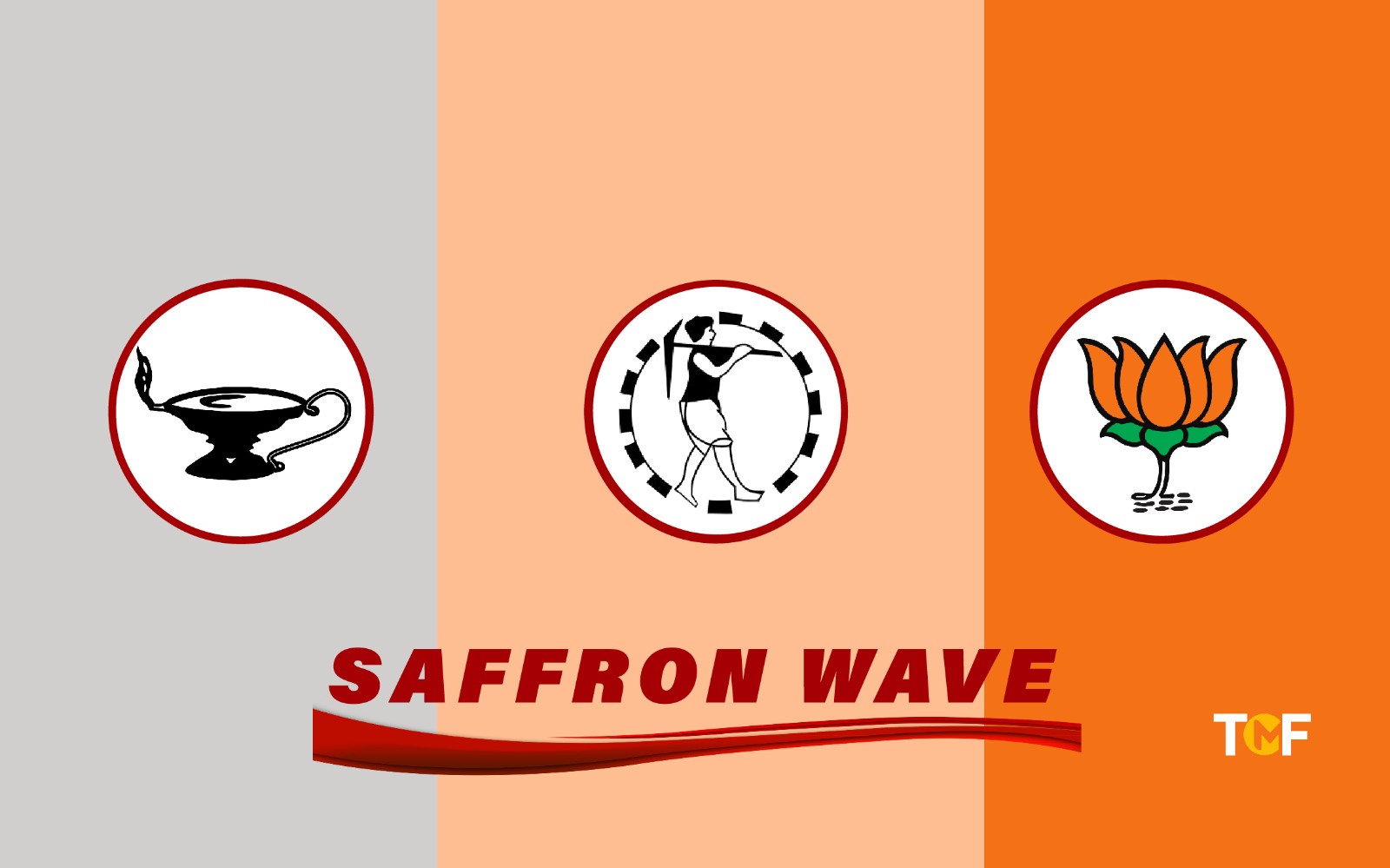Saffron wave
The major right-wing Hindu Nationalist Political Party; Bharatiya Janata Party (BJP) , claims to create an ideal polity based on ancient Hindu culture. The Saffron wave in India is strengthened by BJP in current political scenario. According to the BJP, Hindutva is ‘cultural nationalism’, favoring Indian culture over westernization, thus it extends to all Indians regardless of religion.
The establishment of the Bharatiya Janata Party grew in strength on the back of the saffron movement around Ram Janmabhoomi/ Janam Bhumi in 1987. Although, BJP was officially formed in the 80s; seeds of a Hindutva were sowed much earlier. Let’s dive into the short historical overview of becoming the BJP as a rigorous saffron party.
Prominent forerunners-formative years of saffron wave
Here is a brief account of a few powerful pillars who brought the saffron wave in the Indian political landscape.
Vinayak Damodar Savarkar (1883-1966)
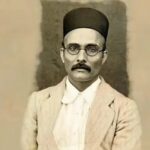
Savarkar was a leading figure in the Hindu Mahasabha [A Hindu Nationalist organization (1915) and a political party (1933)]. During his detention period, he wrote Hindutva: Who is a Hindu? (1923), coining the term Hindutva, which sought to define Indian culture as a manifestation of Hindu values; this concept grew to become a major principle of Hindu nationalist ideology.
Savarkar foresaw a new vision of Hindu social and political consciousness. He mixed politics and religion and started an extreme form of Hindu Nationalism. Savarkar described Hindu as a patriotic inhabitant of Bharatvarsha, expressing beyond a religious identity. While emphasizing the need for patriotic and social unity of all Hindu communities, he described Hinduism, Jainism, Sikhism and Buddhism as one and the same. He outlined his vision of a Hindu Rashtra (Hindu Nation) as “Akhand Bharat” (United India), theoretically stretching across the entire Indian subcontinent.
Savarkar considered being Hindu as a cultural and political identity. He often stressed social and communal unity between Hindus, Jains, Sikhs, and Buddhists, to the exclusion of Muslims and Christians. Savarkar viewed Muslims and Christians as ‘misfits’ in the Indian civilization who could not truly be a part of the nation. He argued that the holistic sites of Islam and Christianity are in the Middle East and not India, hence, the loyalty of Muslims and Christians to India is divided. Savarkar encouraged an anti-Muslim form of Hindu nationalism. It led to a strong foundation of a saffron wave in Indian politics.
Pandit Deendayal Upadhayay (1916-1968)
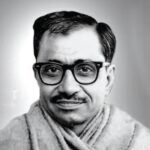
Pandit Deendayal Upadhayay was one of the prominent forerunners of Bharatiya Janata Party. He joined Rashtriya Swayamsevak Sangh (RSS) in 1937, as a sevak. In 1951, Syama Prasad Mukherjee founded the Bharatiya Jana Sangh (Akhil Bharatiya Jan Sangh or Jan Sangh). Akhil Bharatiya Jan Sangh was the political arm of Rashtriya Swayamsevak Sangh (RSS) organization. Deendayal was seconded to Jan Sangh party by the RSS, granted with the responsibility of leading it into a genuine member of the ‘Sangh Parivar’.
Deendayal Upadhyay is best remembered for his principle of ‘integral humanism’, which has been defined as ‘a classless, casteless and conflict-free social order’. It talks about the integration of indigenous “Indian culture” with the social, political and economic fabric of the nation.
Syama Prasad Mukherjee (1901-1953)
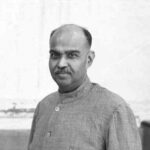
Syama Prasad Mukherjee, was president of Akhil Bharatiya Hindu Mahasabha from 1943 to 1946. Post-independence, he served as a Minister for Industry and supply in Jawaharlal’s cabinet. After the Liaquat-Nehru pact, Mukherjee resigned from the cabinet protesting against the said pact. With the help of RSS, Mukherjee founded Bharatiya Jana Sangh (BJS) in 1951. BJS Party was founded with the aim of being a ‘nationalistic alternative’ to the Congress Party.
The Jana Sangh’s goals included the protection of India’s ‘Hindu’ cultural identity. And countering the appeasement of Muslim people and Pakistan country by the Congress party. The RSS loaned several of its leading full-time workers to the Jana Sangh to get the new party off the ground. BJS was extensively observed as the political arm of the RSS.
The Janata Party was founded on the background of imposed emergency (1975 to 1977) by then PM Indira Gandhi of the Indian National Congress. In 1977, Bhartiya Jan Sangh merged with several other left, Centre and right parties and formed a Janata Party. In the same year Janata Party defeated the Congress and Janata Party leader Morarji Desai became the first non-Congress Prime Minister in an independent modern India’s history.
Formation of the Bharatiya Janata Party (80s)
Atal Bihari Vajpayee (1924-2018)
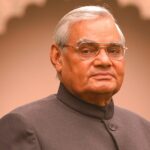
Atal Bihari Vajpayee was one of the founding members of Bharatiya Jana Sangh, he was president of the party from 1968 to 1972. In 1951, he was seconded by the RSS, along with Deendayal Upadhayay, to work for newly formed party Bharatiya Jana Sangh (BJS). Vajpayee served as a national secretary of the Bharatiya Jana Sangh in charge of the Northern region.
In 1977, when Janata Party (JP) won the general election, Vajpayee became the Minister of External Affairs in PM Desai’s cabinet. Vajpayee resigned in 1979, and the Janata alliance collapsed soon after. Former members of Bharatiya Jana Sangh (BJS) formed Bharatiya Janata Party in the 1980, and Vajpayee was party’s first president.
Stern saffron wave in the making
The national leadership of the former Jana Sangh consciously renounced its former identity. And attempted to integrate with the political culture of the Janata Party, based on Gandhian and Hindu traditionalist principles. These conflicting ideologies did not work for the party for long. The state and local levels of the Janata Party remained relatively unchanged, retaining a strong association with the RSS, which did not sit well with the moderate Centre-right (secular) constituents of the Party.
Violence between Hindus and Muslims increased sharply during the years that the Janata Party formed the government, with former Jana Sangha members being implicated in the riots in Aligarh and Jamshedpur in 1978-79. The other major constituents of the Janata Party demanded that the Jana Sangha should break from the RSS, which few Janata Party members refused to do. Eventually, a fragment of the Janata Party broke off to form the Janata Party (secular).
After the failure in the 1980s General Elections, the National Executive Council of the Janata Party banned its members from being ‘dual members’ of the party and the RSS. In response to this, in 1979, Desai and Vajpayee resigned, triggering the collapse of the Janata Party. The past members of the Bharatiya Jana Sangh came together to form the Bharatiya Janata Party (BJP) in 1980, under the leadership of Atal Bihari Vajpayee as its first President.
Under Vajpayee, the BJP moderated the Hindu-nationalist position of the Jana Sangh, emphasizing its connection to the Janata Party and expressing support for Gandhian Socialism. The ideological shift did not bring the party any success. This failure of Vajpayee’s moderate strategy led to a shift in the ideology of the party toward a policy of more assertive Hindu nationalism.
Lal Krishna Advani (1927)
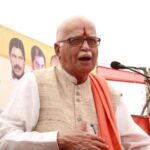
L.K Advani was one of the founding members of BJP as well as a member of RSS. He is credited for BJP being the major national opposition political party to Indian National Congress. In 1984, Advani became president of the BJP. Under Advani’s leadership, the BJP returned to a policy of hardline Hindu nationalism.
At the same time, in the early 80s, Vishwa Hindu Parishad (VHP) began a campaign for the construction of the Ayodhya Ram Mandir at the disputed site of the Babri Mosque. The similar strategy paid off for the BJP; it won 86 seats in the Lok Sabha in the 1989 general election, making its support crucial to the government of V. P. Singh.
The Saffron wave gained its peak and momentum when Advani initiated the Ram Rath Yatra. In the 1990s L.K. Advani led Ram Rath Yatra, a political and religious rally to mobilize volunteers for Ram Janmabhoomi movement. Also, to support VHP agitation to erect a Ram Mandir on the site of Babri Masjid. The yatra involved thousands of kar sevaks, or volunteers from Sangh Parivar. The yatra caused outburst of both religious and radical sentiments among Hindus across India. The procession started from Somnath in Gujarat and headed to converge at Ayodhya. The matter intensified when the Hindu-Muslim violence erupted. And consequently, Babri Mosque was demolished by the Saffron volunteers. Which was seen as a victory by the majority of Hindus.
This Hindu mass movement was a pinnacle in the saffron wave in India. The wave which is now has become stronger and has reached not only nationally but also at the international level.
TMF provides political consultancy, political brand building and political campaign services. To know more, visit The Media Flair website.
